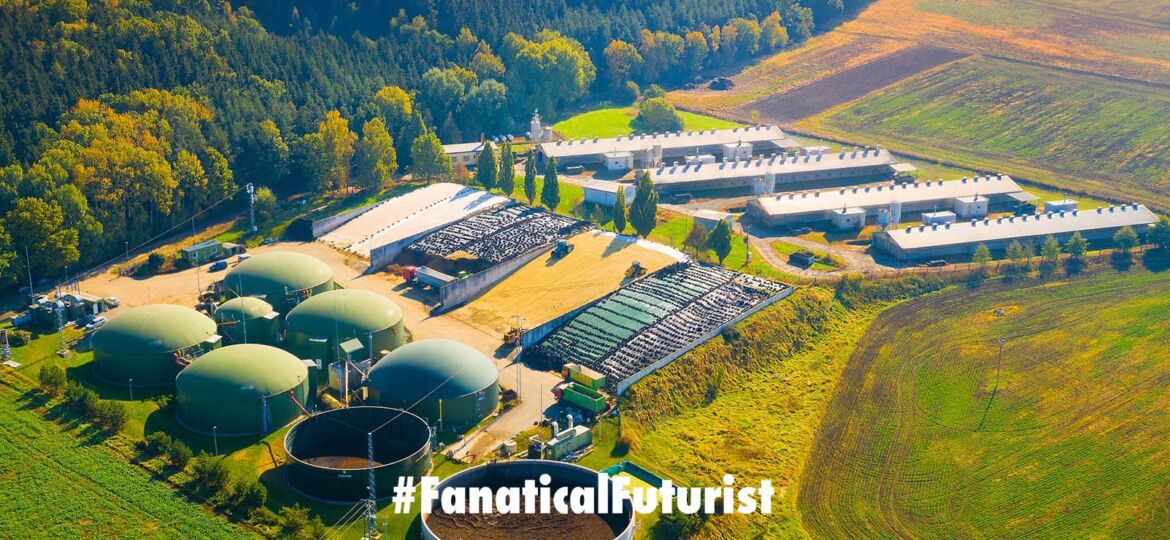
WHY THIS MATTERS IN BRIEF
Biogas is green-ish and renewable, but hydrogen is arguably the ultimate green fuel and now we can make it from biogas.
 Love the Exponential Future? Join our XPotential Community, subscribe to the podcast, future proof yourself with courses from XPotential University, read about exponential tech and trends, connect, watch a keynote, or browse my blog.
Love the Exponential Future? Join our XPotential Community, subscribe to the podcast, future proof yourself with courses from XPotential University, read about exponential tech and trends, connect, watch a keynote, or browse my blog.
As more companies around the world try to find more ways to reduce greenhouse gas emissions and produce clean energy California-based Kore has developed a new way to produce hydrogen from biogas which can then be used to power legacy gas powered turbines and power plants – in a double win. Furthermore they claims the new method could potentially provide hydrogen for less than $2 per kg.
“We produce biogas and biochar from biogenic feedstocks and the resulting biogas contains hydrogen, carbon monoxide, methane, and carbon dioxide,” said Kore’s executive vice president of business development, Steve Wirtel. “The carbon monoxide can also be converted into more hydrogen, and we can use that for hydrogen applications.”
California is a prime location for biomass conversion, as the primary feedstock is plentiful. Kore has partnered with Southern California Gas to develop a commercial-scale demonstration facility in Los Angeles.
“We expect that, as we start to commercialize our technology, the strategic companies that are looking to develop hydrogen, especially carbon-negative renewable hydrogen, will be interested in partnering with our company and potentially acquiring us at some point,” said Wirtel.
Wirtel said the state could offer more than 40 million tons of biomass per year.
“Apart from urban woody biomass and nearby agricultural residuals, California has a new initiative to thin out forests to reduce wildfire risks,” he said, noting that the state also offers favorable policies.
In the future, economies of scale and falling technology costs should favor similar locations. They will likely be the first ones to see plummeting hydrogen costs.
“The US Department of Energy has a goal of $1/kg of hydrogen by 2030. So everyone is aiming towards that. And we think that is feasible,” said Wirtel, noting that the process is carbon negative. “With the Kore process, half of the carbon in the feedstock is converted into the gas, and the other half is converted into solid elemental carbon char. This solid carbon won’t revert to carbon dioxide or methane. When used as a soil amendment, the carbon is permanently removed from the atmosphere. Hence the hydrogen produced is carbon negative. In other words, carbon is removed from the atmosphere.”
Paul Martin, one of the founders of the Hydrogen Science Coalition, said that biogas should be prioritised, as the conversion from biogas to hydrogen is energy-intensive.
“The reason hydrogen is expensive at vehicle refuelling stations is that vehicle refuelling stations themselves are very complex. Hydrogen heats up when you expand it, so you need not just high-pressure storage tanks and compressors, you need a massive mechanical refrigeration unit to pre-cool the hydrogen so it doesn’t cook the vehicle’s tanks,” he said.
Gasification technologies – biomass-to-hydrogen, but also plastic waste-to-hydrogen – are nothing new. But the current geopolitical situation, waste concerns and energy issues are now putting the spotlight on new applications.
















